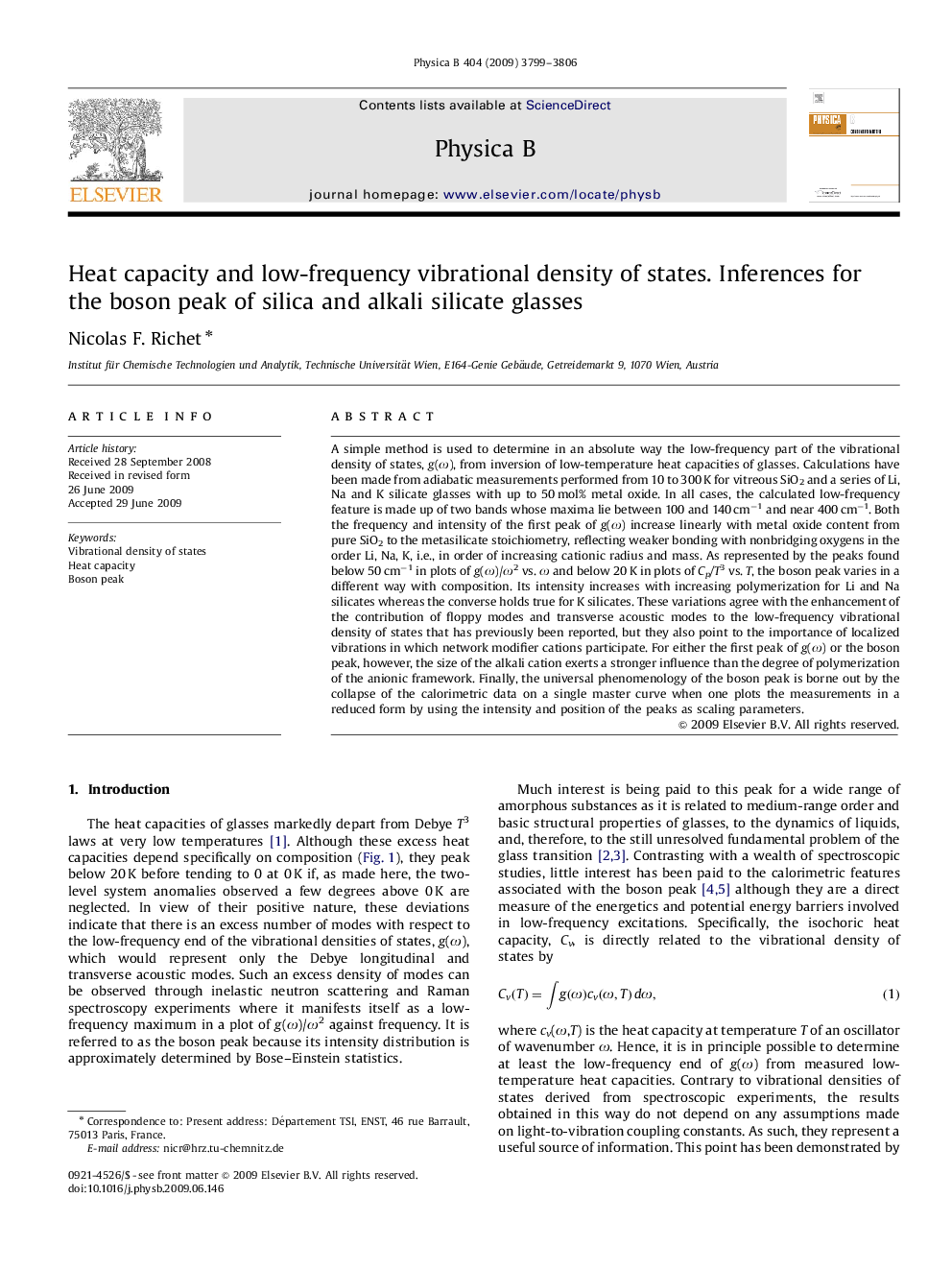| کد مقاله | کد نشریه | سال انتشار | مقاله انگلیسی | نسخه تمام متن |
|---|---|---|---|---|
| 1814040 | 1025643 | 2009 | 8 صفحه PDF | دانلود رایگان |

A simple method is used to determine in an absolute way the low-frequency part of the vibrational density of states, g(ω), from inversion of low-temperature heat capacities of glasses. Calculations have been made from adiabatic measurements performed from 10 to 300 K for vitreous SiO2 and a series of Li, Na and K silicate glasses with up to 50 mol% metal oxide. In all cases, the calculated low-frequency feature is made up of two bands whose maxima lie between 100 and 140 cm−1 and near 400 cm−1. Both the frequency and intensity of the first peak of g(ω) increase linearly with metal oxide content from pure SiO2 to the metasilicate stoichiometry, reflecting weaker bonding with nonbridging oxygens in the order Li, Na, K, i.e., in order of increasing cationic radius and mass. As represented by the peaks found below 50 cm−1 in plots of g(ω)/ω2 vs. ω and below 20 K in plots of Cp/T3 vs. T, the boson peak varies in a different way with composition. Its intensity increases with increasing polymerization for Li and Na silicates whereas the converse holds true for K silicates. These variations agree with the enhancement of the contribution of floppy modes and transverse acoustic modes to the low-frequency vibrational density of states that has previously been reported, but they also point to the importance of localized vibrations in which network modifier cations participate. For either the first peak of g(ω) or the boson peak, however, the size of the alkali cation exerts a stronger influence than the degree of polymerization of the anionic framework. Finally, the universal phenomenology of the boson peak is borne out by the collapse of the calorimetric data on a single master curve when one plots the measurements in a reduced form by using the intensity and position of the peaks as scaling parameters.
Journal: Physica B: Condensed Matter - Volume 404, Issue 20, 1 November 2009, Pages 3799–3806